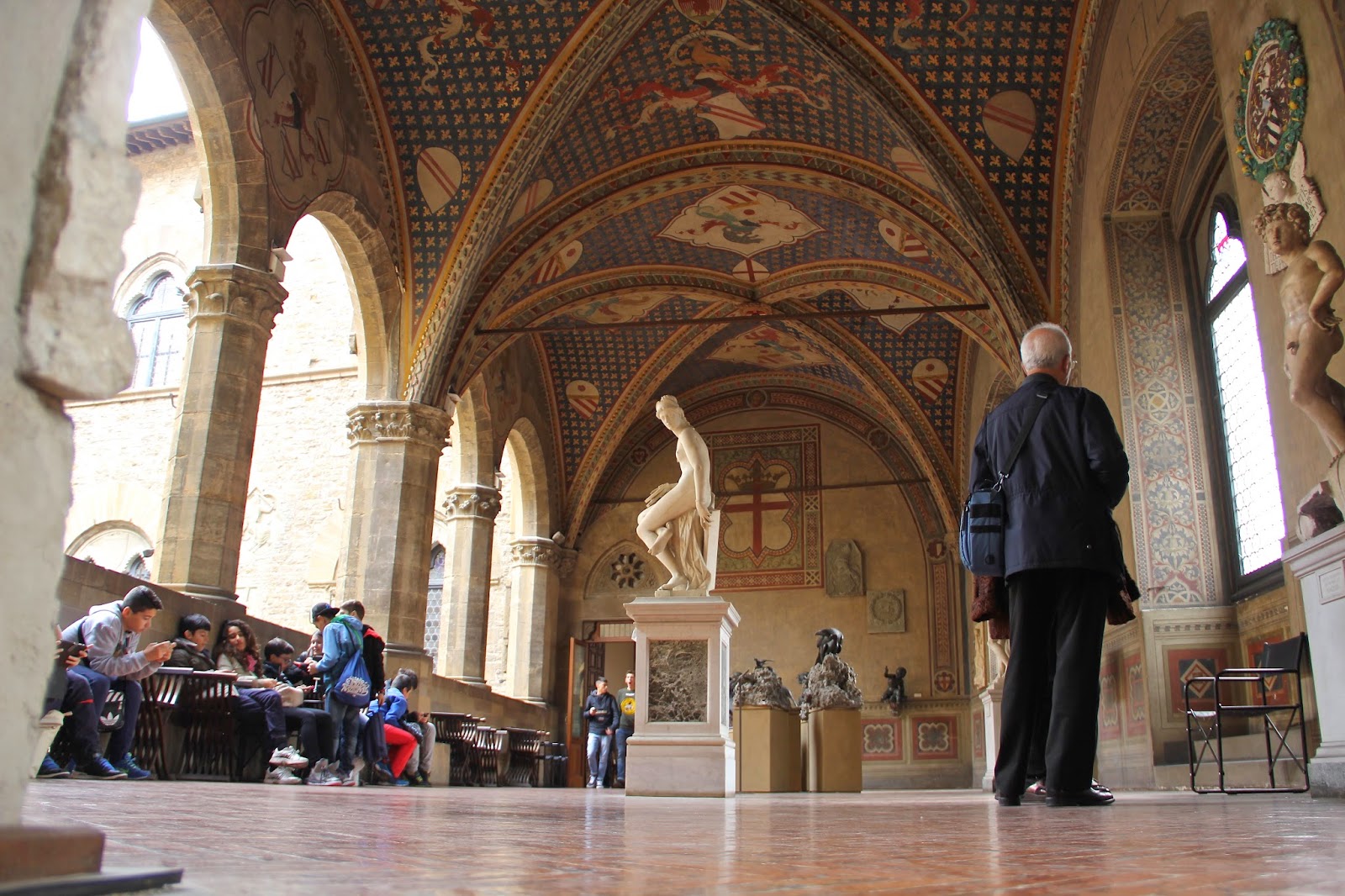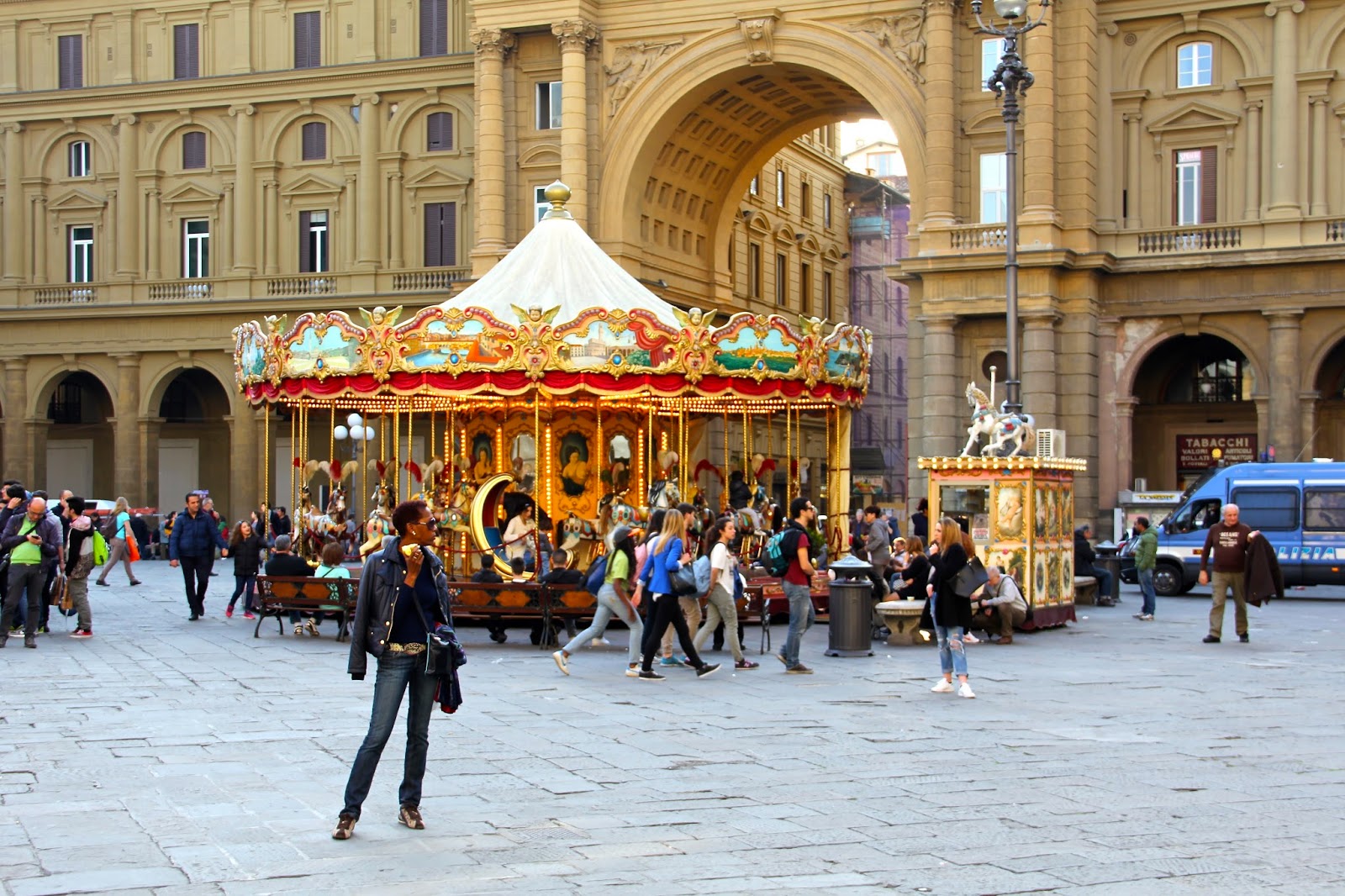Are you getting tired of visiting churches? So am I.
Let's look at some of this and some of that. Maybe the quiet roaming of the last day in Rome.
Maybe the day will begin in the old markets of Piazza Navona.
Even if you are tired of sightseeing, you have to make time to visit the Pantheon.
And make time to people watch.
And make time to people watch.
After walking around for a day, it is time to rest for a while on the rooftop terrace of the hotel,
for another view of the Monument to Victor Emmanuel and a nearby church.
In the evening let's go across the Tiber to the active nightlife of Trastevere.
On the way, enjoy a view of St. Peter's Basilica in the distance from a bridge across the Tiber.
And, find a nice trattoria to say goodbye to Rome.



























































